Do you know the heritage regions of the Susquehanna Greenway? Well, here’s your chance to find out! Pennsylvania is home to 12 state-recognized heritage regions, and five of them cross paths with the Susquehanna Greenway. One of these five is even included on the list of nationally recognized heritage regions. Do you know which one? Keep reading to find out!
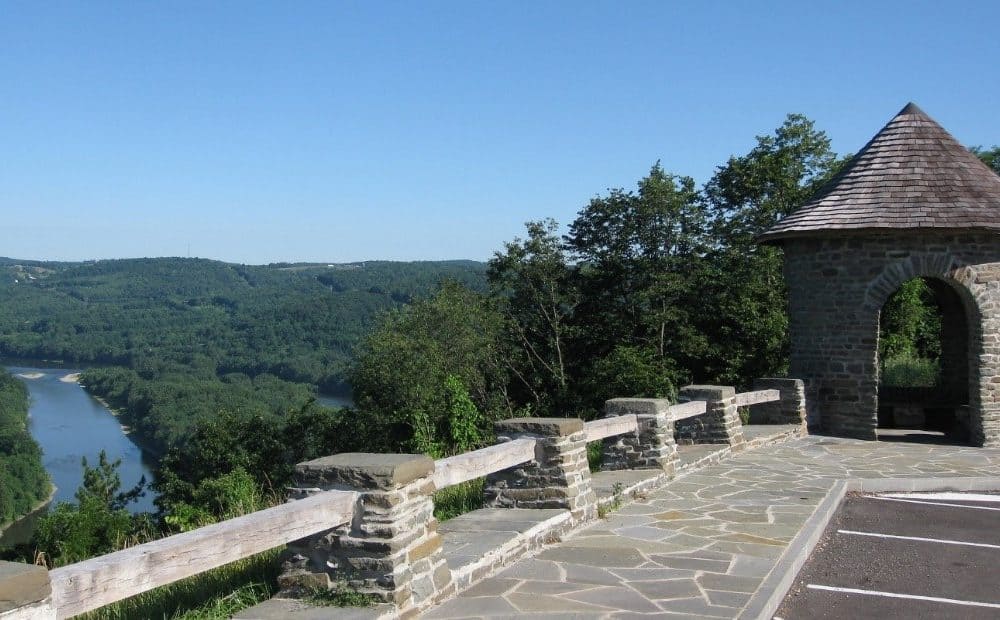
Endless Mountains Heritage Region
Along the gentle flowing waters of the North Branch of the Susquehanna Greenway lies a region not only rich in natural resources, but also full of cultural heritage. Formed in 1998, the Endless Mountain Heritage Region (EMHR) celebrates the rural character and pastoral culture within Bradford, Sullivan, Wyoming, and Susquehanna Counties.
Photo: Marie Antoinette Overlook, Bradford County
This region has been shaped by traditions from all parts of the world thanks to centuries of civilizations and cultures. Some of these groups have included French settlers at Azilum in the 18th century, Irish and Welsh canal workers and miners in the 19th century, and the Italians and Eastern Europeans in the 20th century. People from all walks of life grew a network of small towns that contributed to developing a rich agricultural landscape, as well as an industrial boom in logging, tanning, and mining due to the region’s rich resources. Following this expansion of industry and transportation, the Civilian Conservation Corps was brought in to restore the Endless Mountains’ ecology and preserve the landscape through the recreational areas we know today. Now, the Endless Mountains Heritage Region showcases an example of our beautiful river valley landscape, while also remembering its historical importance to the human development of the area and nation at large.
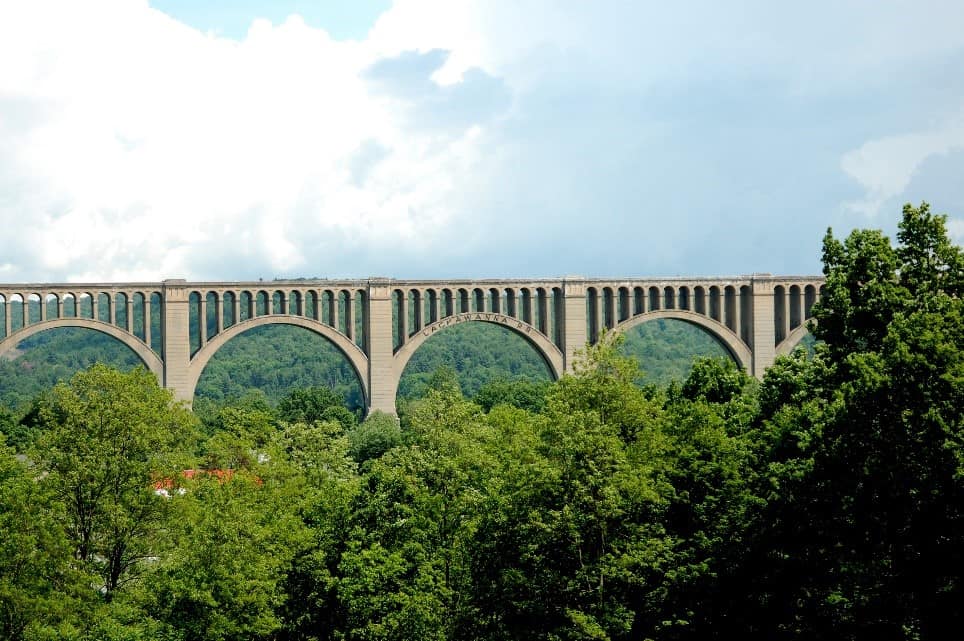
Pennsylvania Route 6
According to National Geographic, the historic US Route 6 is “One of America’s most scenic drives.” Managed by the PA Route 6 Alliance, this heritage area provides a variety of things to do and see along Pennsylvania’s northern tier, and even crosses several other Heritage areas including EMHR. While the full route stretches over 400 miles across the Commonwealth, a 45-mile portion from Towanda to Tunkhannock joins with the Susquehanna Greenway.
Photo by Robert Kulow, Tunkhannock Viaduct
This unique corridor not only links small towns, historic sites, and beautiful scenery, but it also provides outdoor recreation opportunities and even an artisan trail. The route that touches the Greenway follows Pennsylvania Bicycle Route Y, which is a segment within the larger US Bike Route 36 that connects cyclists from across the state to Ohio and New York. The Route also showcases industrial history, including the first underground mine, the first steam locomotive, and the first lighthouse on the Great Lakes. What a great way to #GetOutontheGreenway!
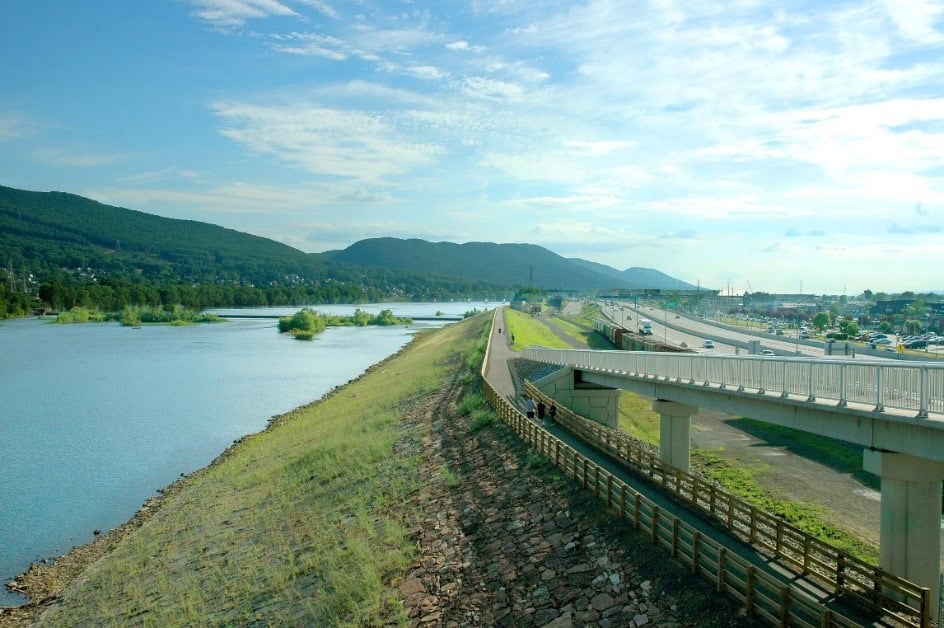
Lumber Heritage Region
Flowing 228 miles from Cherry Tree to Sunbury, the West Branch forms the lifeblood linking what is now known as the Lumber Heritage Region. Here, Pennsylvania’s virgin timber was harvested throughout the 19th and early 20th centuries to supply lumber for shipbuilding, construction, and coal mine props. Much of this lumber was rafted down the West Branch to markets on or near the Chesapeake Bay. This heritage region is also the largest of the 12 within the Commonwealth, covering a 15-county region in North West/North Central Pennsylvania. Numerous communities note this era as an important influencer in shaping their region. The Susquehanna Greenway River Towns of Renovo, South Renovo, Noyes Township, Lock Haven, Jersey Shore, and Williamsport all were impacted by this time in history.
Photo by Bradley Breneisen, Susquehanna River Walk and Timber Trail, Williamsport
Williamsport was among the largest of the lumber communities in the region and was forever marked by the men and women who made their fortunes clearing the hills North and West of the community. Remnants of this history are still visible in the remains of the Susquehanna Boom just offshore, along the Susquehanna River Walk and Timber Trail, and at the historic home of lumber baron Peter Herdic, a restored Victorian mansion that now houses a restaurant and inn.
Today the woodlands and waterways of the Lumber Heritage Region provide some of our favorite landscapes for outdoor recreation. A few additional Susquehanna Greenway highlights in this region include the David S. Ammerman Rail Trail of Clearfield County, Hyner View State Park of Clinton County, and Milton State Park of Union County.
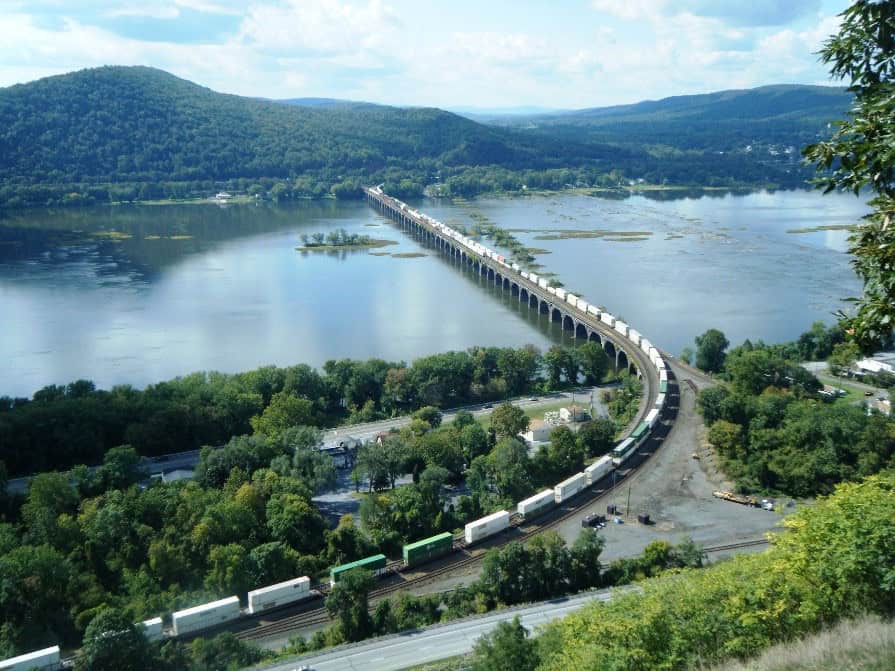
Allegheny Ridge
The Allegheny Ridge Heritage Area touches the Susquehanna Greenway where the Main Line Canal Greenway meets up with the Susquehanna River near Duncannon and travels south to Harrisburg. What defines this heritage area are the historical advances in highways, railroads, and bridges that made the formidable barrier of the 2,400-foot tall Allegheny Ridge navigable. The trail that touches the Susquehanna Greenway follows its route along the Pennsylvania Main Line Canal System, which marked the beginning of an era of transportation improvements.
Photo by Perry Ligon, Rockville Bridge, Dauphin County
Even just the short 15-mile section of the trail that meets up with the Susquehanna Greenway is marked with important landmarks of Pennsylvania’s transportation history. Perhaps the most iconic of these is the Rockville Bridge, which remains the longest stone masonry arch railroad viaduct in the world. Other nearby attractions important to local heritage include the Fort Hunter Mansion and Park on the Susquehanna’s east bank and the Dauphin Narrows Statue of Liberty just upriver.
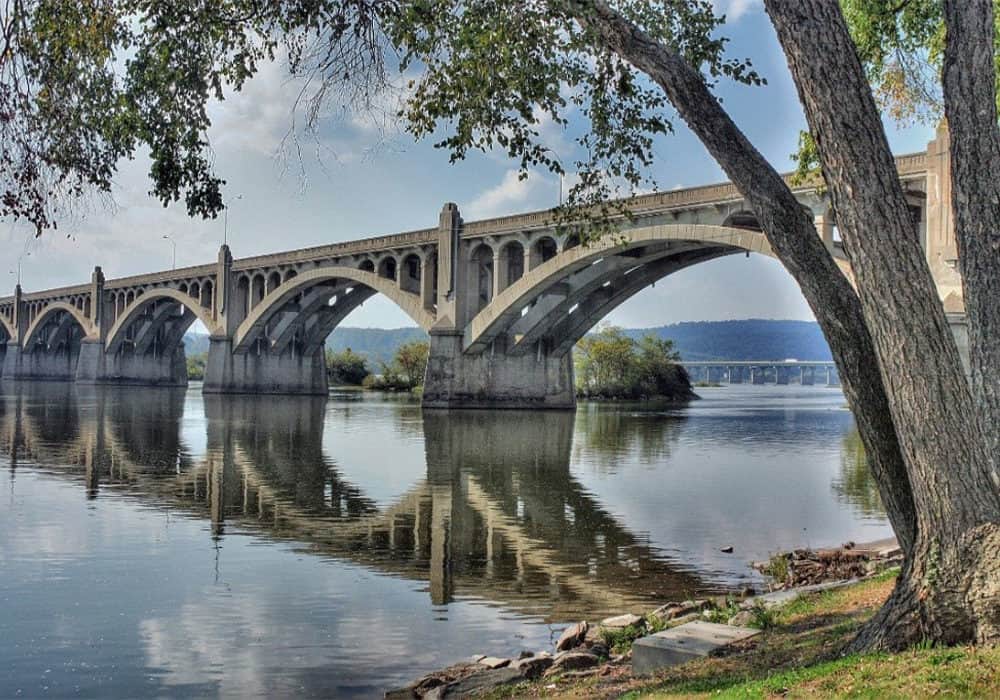
Susquehanna National Heritage Region
This is it! The one you’ve been waiting for! The Susquehanna National Heritage Region was just recently designated as America’s 55th National Heritage Area. Its ribbon of scenic and historic landscapes and communities runs along both shores of the Susquehanna River as it flows through Lancaster and York Counties in South Central Pennsylvania.
Photo by Cindy Klinger, Columbia-Wrightsville Bridge, Lancaster County
Focused on both outdoor fun and cultural discovery, the heritage region has two main hubs along the river—the historic Zimmerman Center for Heritage in Wrightsville and the Columbia Crossing River Trails Center in Columbia. Both serve as gateways to the recreational and educational opportunities in this heritage area, which overlaps with a portion of the lower Susquehanna Greenway. Some of our favorite Greenway trails in this region include the Northwest Lancaster County River Trail and the Mason-Dixon Trail.
Honorable Mentions
Delaware & Lehigh National Heritage Corridor
Stretching 150 miles overall, the Delaware and Lehigh Navigation Canal Heritage Corridor (NHC) follows the historic routes and overland railroads of the Delaware Canal and the Lehigh Navigation System, from Bristol to Wilkes-Barre, in eastern Pennsylvania. While no completed portion of the corridor’s trail touches the Susquehanna Greenway, the end section that touches Wilkes-Barre is on the docket for future linkage and trail development. The proposed trail will travel through the quiet, wooded mountains just south of Wilkes-Barre, and will pass through the Seven Tubs Nature Area, known for its pools and falls. We look forward to seeing this trail touch the Greenway! Wilkes-Barre itself, which sits right on the shores of the Susquehanna, is the farthest reach of the heritage corridor. Its River Commons is a reminder of the Yankee settlers who planned the town and the River Street Historic District, containing more than 200 historic buildings.
Lackawanna Heritage Valley
The Lackawanna Heritage Valley National and State Heritage Area (LHV) is located in Northeastern Pennsylvania, encompassing the watershed of the Lackawanna River in Lackawanna, Susquehanna, Wayne, and Luzerne counties. It is also home to the 70-mile Lackawanna River Heritage Trail, and receives our honorable mention because a very short 1-mile portion on the southern end of the trail runs within the Susquehanna Greenway along the river in Pittston, PA. As a whole, the heritage area is rich in coal mining and railroad history, especially in the Scranton area.

